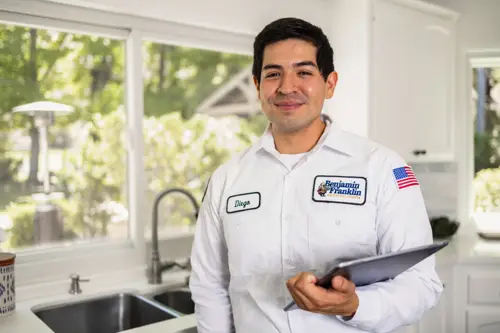 When confronted with plumbing problems, many homeowners question whether it is better to fix the pipes or replace them. The answer depends on the severity of the damage and the type of plumbing system in question. Knowing what to look for and what choices are available can help you choose the best option for your home.
When confronted with plumbing problems, many homeowners question whether it is better to fix the pipes or replace them. The answer depends on the severity of the damage and the type of plumbing system in question. Knowing what to look for and what choices are available can help you choose the best option for your home.
Understanding the Average Lifespan of Different Pipes
How long your pipes last is heavily dependent on their material. Brass, copper and galvanized steel supply lines typically have a lifespan of 70 to 100 years. When these pipes burst, they unleash a torrent of water that can flood an entire home. In contrast to polyvinyl chloride (PVC) pipes, which typically only last 25 to 40 years, cast-iron drain lines are capable of lasting 80 to 100 years.
Having pipes that are older than these norms isn’t always a reason to get new ones. However, if you live in a location with hard water, which means the water has a high mineral content, or if your pipes aren’t well-maintained, you might have to replace them sooner rather than later.
Common Drain Pipe Issues
Your drain pipes are susceptible to a number of typical problems, the severity of which determines how often you should repair or replace them. Some of the most common drain pipe issues are:
- Cracked pipes
- Invasive roots
- Blockages and clogs
- Presence of mold
- Frequent leaks
- Sewage odor leaks
- Backups
- Misaligned pipes
- Corroded pipes
- Collapsed pipes
Signs That You Need to Repair Your Pipes
When dealing with pipes that are relatively recent and constructed of robust materials, repairing them becomes an excellent alternative to a full replacement. In many cases, a focused repair can resolve minor isolated issues like a clog or leak.
Here are the top signs that you may need to repair your pipes:
- Decreased water pressure
- Water bill keeps getting higher
- Discoloration on walls, floors or ceilings
- Outdated pipes
- Frequent pipe leaks
- Corrosion on the pipes
- Rust-colored water
Most Popular Ways to Perform Drain Pipe Repairs
Drain pipe hydrojetting and epoxy liner installation are two of the most common pipe repair techniques. Hydrojetting uses high-pressure water to remove obstructions and debris from your pipes. You can restore proper flow without replacing the pipes by using this method to clear difficult blockages caused by deposits, roots or grease.
The trenchless repair approach, known as epoxy lining, involves inserting a flexible tube coated with epoxy into a damaged pipe. When expanded, epoxy cures to form a new pipe inside the existing one. In certain cases, this is preferable to regular pipe replacement because it causes less disruption and is less invasive.
Pros and Cons of Pipe Repairs
Pros
- Not as intrusive or troublesome as replacing pipes
- Typically, it’s less expensive and takes less time
- Perfect for minor problems and areas with limited damage
Cons
- May work for the time being, but it won’t fix the real problem
- Probably won’t last as long as getting new pipes installed
- Not recommended for very worn or outdated pipe systems
Signs That You Need to Replace Your Pipes
When pipes have sustained significant damage, have corroded or are nearing the end of their lifespan, replacement is usually the best option. Frequent leaks, severe corrosion, chronic clogs and major damage like cracks or collapses are all indications that it’s time for a replacement. Pipe replacement may also be the best and safest way to avoid future problems if your pipes are old and constructed from materials that deteriorate with time, such as PVC.
Best Ways to Repipe a Home
To make sure the plumbing system lasts and works efficiently, it’s crucial to use the correct materials and methods when repiping a house. Although PEX (cross-linked polyethylene) pipes are more pliable and corrosion-resistant, copper pipes are still quite popular due to their endurance and resilience. You can opt for the more traditional approach of removing and replacing old pipes, or you can go with the less invasive trenchless repiping that minimizes disruption to your property.
Pros and Cons of Repiping a Home
Pros
- Offers a permanent fix for plumbing problems
- Raises the property’s market worth
- Minimizes the possibility of future blockages, leaks and water damage
Cons
- Can be pricey, particularly for bigger houses
- Takes more time and effort than fixing pipes
- The installation of the pipes may necessitate other tasks, such as fixing the walls or replacing the flooring
Benjamin Franklin Plumbing is here to help you make the best decision for your home. We can assess the condition of your pipes and tell you whether a repair or replacement is necessary. Call us today!